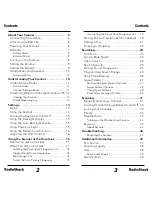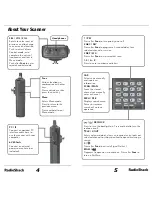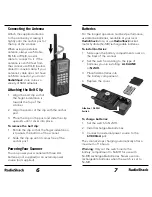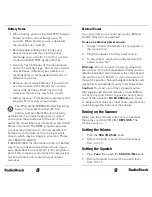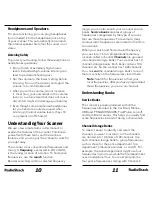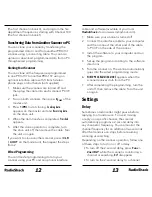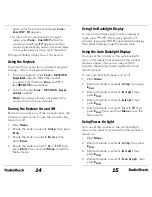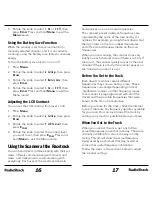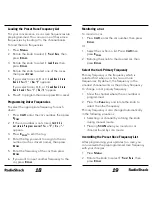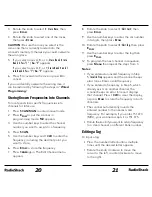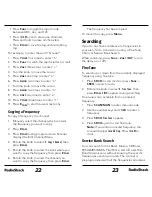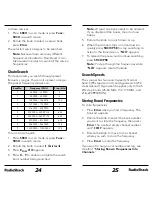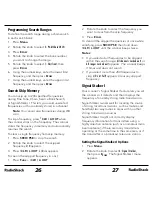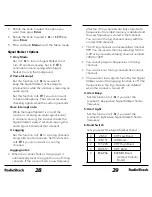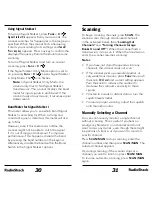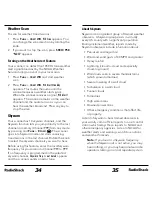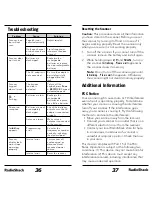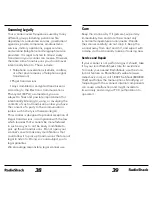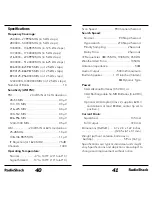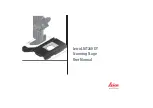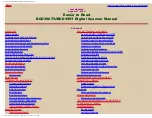
10
11
Headphones and Speakers
For private listening, you can plug headphones
(not included) into the headphone jack on top
of your scanner. This automatically disconnects
the internal speaker. Note that the sound is not
stereo.
Listening Safely
To protect your hearing, follow these earphone or
headphones guidelines:
• Do not listen at extremely high volume
levels. Extended high-volume listening can
lead to permanent hearing loss.
• Set the volume to the lowest setting before
listening. Turn on the scanner, and adjust the
volume to a comfortable level.
• After you set the volume, do not increase
it. Over time, your ears adapt to the volume
level, so a volume level that does not cause
discomfort might still damage your hearing.
• Even though some earphones/headphones
let you hear some outside sounds when
listening at normal volume levels, they still
can present a traffic hazard.
Understanding Your Scanner
We use a few simple terms in this manual to
explain the features of the scanner. Familiarize
yourself with these terms and the scanner’s
features, and you can put the scanner to work for
you right away.
The scanner scans conventional frequencies and
racing. A
frequency
, expressed in kHz or MHz,
is the tuning location of a station. To find active
frequencies, use the
search
function.
Besides searching within a selected frequency
range, you can also search your scanner’s service
banks.
Service banks
are preset groups of
frequencies categorized by the type of services
that use those frequencies. For example, many
amateur radio frequencies are located in the Ham
service bank.
When you search and find a desired frequency,
you can store it into a programmable memory
location called a channel.
Channels
are grouped
into channel-storage banks. Your scanner has 10
channel-storage banks. Each bank contains 100-
channel sets. So the scanner has 1,000 channels.
You can
scan
the channel storage banks to see if
there is activity on the frequencies stored there.
Note:
Search for frequencies to find your
local frequencies, after you have programmed
these frequencies, you can scan channels.
Understanding Banks
Service Banks
The scanner is preprogrammed with all the
frequencies allocated to the Car Band, Marine,
CB Band, FRS/GMRS/MURS, Fire/Police, Aircraft,
and Ham Band services. This helps you quickly find
active frequencies instead of doing a chain search.
Channel Storage Banks
To make it easier to identify and select the
channels you want to listen to, all the channels
are divided into 10 banks of 100 channels. Use
each channel-storage bank to group frequencies,
such as those for the police department, fire
department, ambulance services, or aircraft. For
example, the police department might use four
frequencies in your town while the fire department
uses an additional four. You could program the
four police frequencies starting with Channel 0
Summary of Contents for PRO-137
Page 22: ...42 43 Notes Notes...


